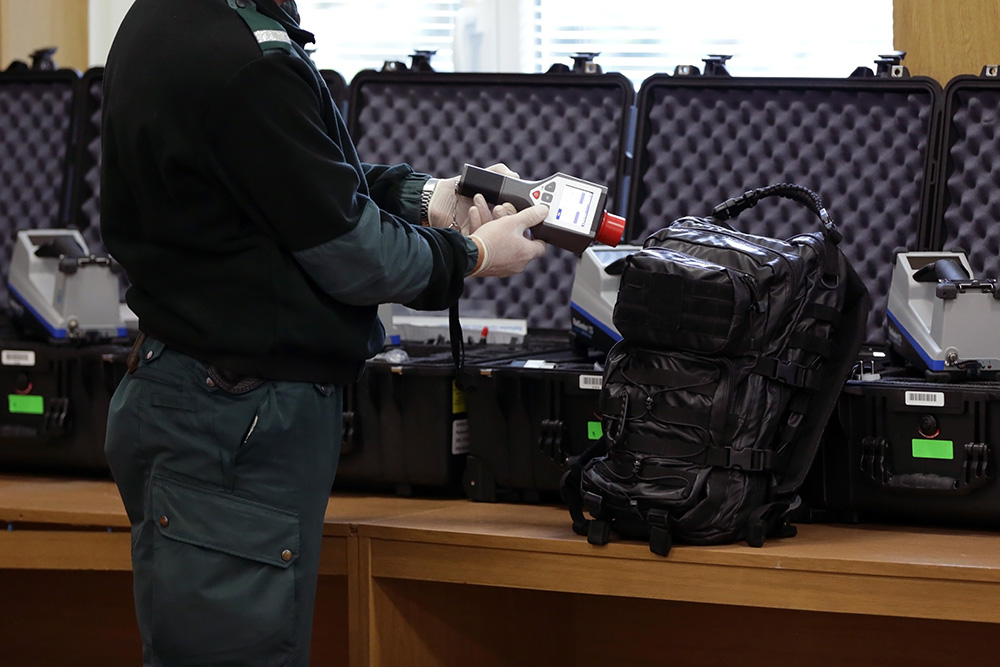Hayward and Wen Lead Research in Detecting Shielded Contraband in Cargo

Many types of dangerous contraband are not easily detectable, yet they still pose a danger when in the wrong hands. It’s necessary to develop rapid and reliable detection of contraband, including explosives, chemical weapons, drugs, and special nuclear materials that may be found in luggage and air and sea cargo containers.
Detecting contraband in such containers is possible by nondestructive means with probing from external radiation, a process called active interrogation, which is a priority for domestic security.
Department of Nuclear Engineering (NE) Professor Jason Hayward is now leading a study funded by the Department of Homeland Security (DHS) entitled “Improving the DEtection of shielded contraband by advancing Algorithms and Systems (IDEAS) for Mobile Active Interrogation using Neutrons (MAIN).” NE Assistant Research Professor Xianfei Wen is one of the co-principal investigators for this $2.5 million IDEAS for MAIN grant, which covers five years of research.
Wen has worked on two other DHS programs with Hayward during his time at UT, and this is his second successful proposal as a lead writer or co-PI. The research team also includes co-PI Professor Qi Cheng of Oklahoma State University and co-investigator NE Assistant Research Professor Michael Liesenfelt.
The work will be conducted under the DHS Academic Research Initiative program, which is specifically designed to further active technologies for countering weapons of mass destruction. While X-ray scanning may identify potential threats in containers, it’s often not sensitive enough by itself to distinguish between normal items and contraband.
As such, the team will develop advanced methods that use fusion neutrons produced by the deuterium-deuterium or deuterium-tritium neutron generators to be housed in the Zeanah Engineering Complex’s Fast Neutron Source. They will investigate statistical pulse processing approaches, machine learning methods, and data fusion techniques that rely on primary scans obtained by X-ray radiography. The team plans to use their high energy X-ray source, also donated by DHS under a Cooperative Research and Development Agreement, to be installed later this year in Zeanah’s Accelerator Research Center for the data fusion study.
“We intend for this research performed in Zeanah’s new shielded spaces to yield solutions to overcome the research challenges encountered by the MAIN program’s industry team,” said Hayward, UCOR Fellow in the department. Detection of most contraband will be understood through use of simulants. Since this isn’t possible for the nuclear material study, the team plans to take advantage of its access to Y12’s 19.5 percent enriched uranium supply to develop and demonstrate an ability to detect even small quantities of nuclear material in cargo.
This is Hayward’s fifth grant as PI from DHS, and DHS has funded many other programs at UT in radiation detection materials development as well.
“We are thankful for the continued investment by the Department of Homeland Security in our research, our facilities and our students at the University of Tennessee,” he said.